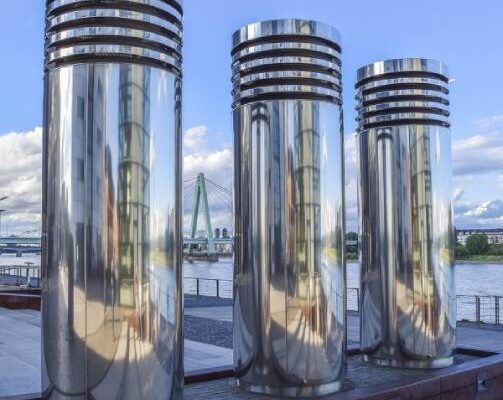
321 Stainless Steel Tubing: Advanced Protection for High-Temperature Industrial Systems Where Performance Cannot Be Compromised
Industrial systems face constant threats that can lead to devastating failures at the worst possible moments. These challenges emerge from multiple directions – extreme thermal cycling, aggressive chemical environments, mechanical stress, and unpredictable operating conditions. Engineers tasked with material selection understand the high stakes involved in these decisions. When equipment reliability directly impacts safety records, production targets, and financial outcomes, choosing appropriate alloys becomes paramount. The consequences of poor material specification ripple throughout operations, potentially triggering costly shutdowns, creating unnecessary maintenance burdens, and even compromising worker safety. Premium-grade stainless materials offer proven solutions to these complex challenges.
Understanding 321 Stainless Steel Tube: Properties, Applications, and ASTM Standards reveals why this specialized alloy has become indispensable across numerous industries. The titanium stabilization mechanism sets this grade apart from conventional stainless options, providing crucial protection during welding procedures and prolonged exposure to elevated temperatures.
Many engineers overlook the fundamental chemistry behind 321’s exceptional performance. The titanium addition acts as a strategic guardian, forming strong bonds with carbon atoms that would otherwise combine with chromium during thermal exposure. This seemingly small chemical interaction prevents the formation of chromium carbides along grain boundaries – the primary culprit behind sensitization and subsequent intergranular attack.
Standard 321 composition includes approximately 17-19% chromium and 9-12% nickel, but the true magic happens with titanium content calibrated at five times the carbon percentage. This precise balance delivers remarkable stability in the 800-1500°F temperature range where regular austenitic grades struggle.
Real-world applications showcase 321’s versatility. Process industries rely on it for heat exchangers handling aggressive media. Automotive manufacturers select it for exhaust components subjected to thermal cycling. Aerospace engineers specify it for jet engine parts where failure isn’t an option. Chemical processing facilities depend on it for reaction vessels managing corrosive substances at elevated temperatures.
Regarding industry specifications, ASTM A269 covers general service applications while A213 addresses more demanding boiler and heat exchanger requirements. These standards establish strict manufacturing protocols, ensuring consistent quality across production batches. Dimensional tolerances, surface finish requirements, and mechanical properties must meet precise criteria before certification.
When comparing alternatives, 321 offers distinct advantages over 304 in thermal stability, though at marginally higher cost. Against 347 (the niobium-stabilized cousin), 321 typically provides comparable performance characteristics but often with better market availability and sometimes more favorable pricing.
Fabrication techniques deserve careful consideration. While 321 welds readily using conventional stainless methods, proper filler metal selection becomes essential for maintaining corrosion resistance. Unlike some grades requiring complex post-weld heat treatments, 321 generally maintains its integrity without additional processing, streamlining installation procedures.
Supply chain realities show improved availability for standard dimensions, though specialized sizes may still require extended lead times. Procurement teams should factor this variability into project timelines to avoid costly delays when systems cannot afford downtime.
Looking at total ownership costs reveals 321’s long-term value proposition. The initial premium quickly pays dividends through extended service life, reduced maintenance requirements, and avoided replacement expenses – particularly in applications where system accessibility presents significant challenges.
Testing regimens for 321 stainless tubing often incorporate both mechanical and corrosion resistance evaluations. Hydrostatic testing confirms structural integrity, while intergranular corrosion tests validate stabilization effectiveness. Quality control specialists sometimes perform metallographic examinations to verify proper grain structure. Seasoned metallurgists recommend periodic inspection of installed 321 components, particularly at weld zones, despite the material’s legendary reliability. Recent case studies from petrochemical facilities suggest that properly specified 321 tubing can outlast alternative materials by factors of 2-3× in similar service conditions, translating to substantial operational cost savings over facility lifespans.
Featured Image Source: https://cdn.pixabay.com/photo/2020/07/13/18/14/architecture-5401627_1280.jpg

